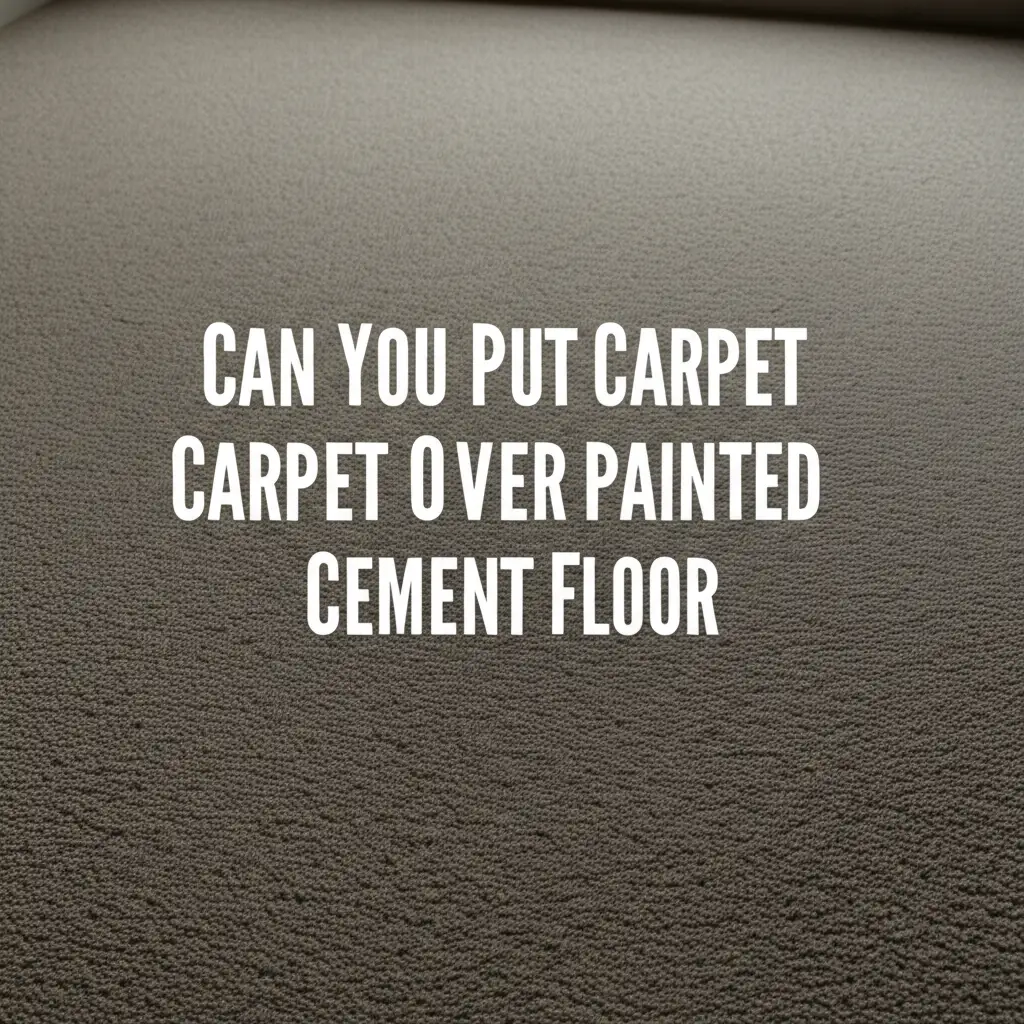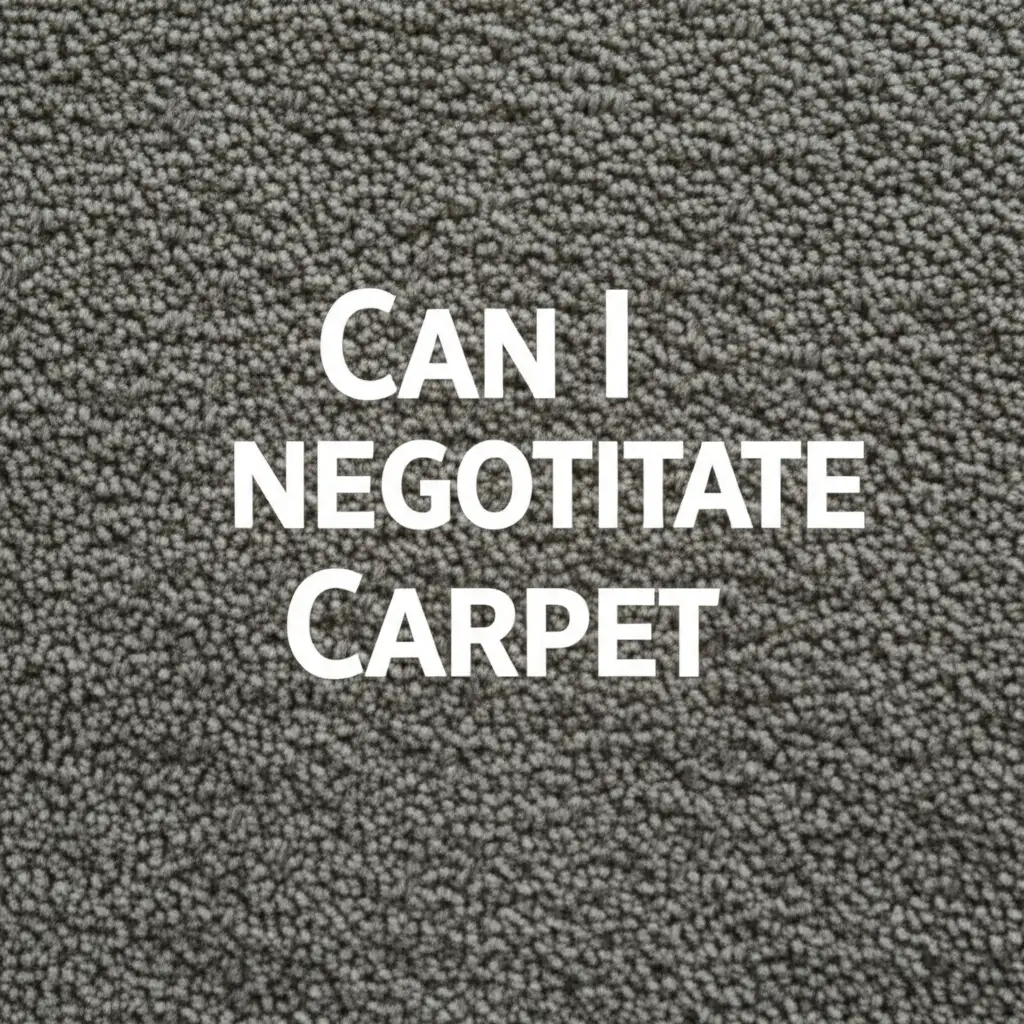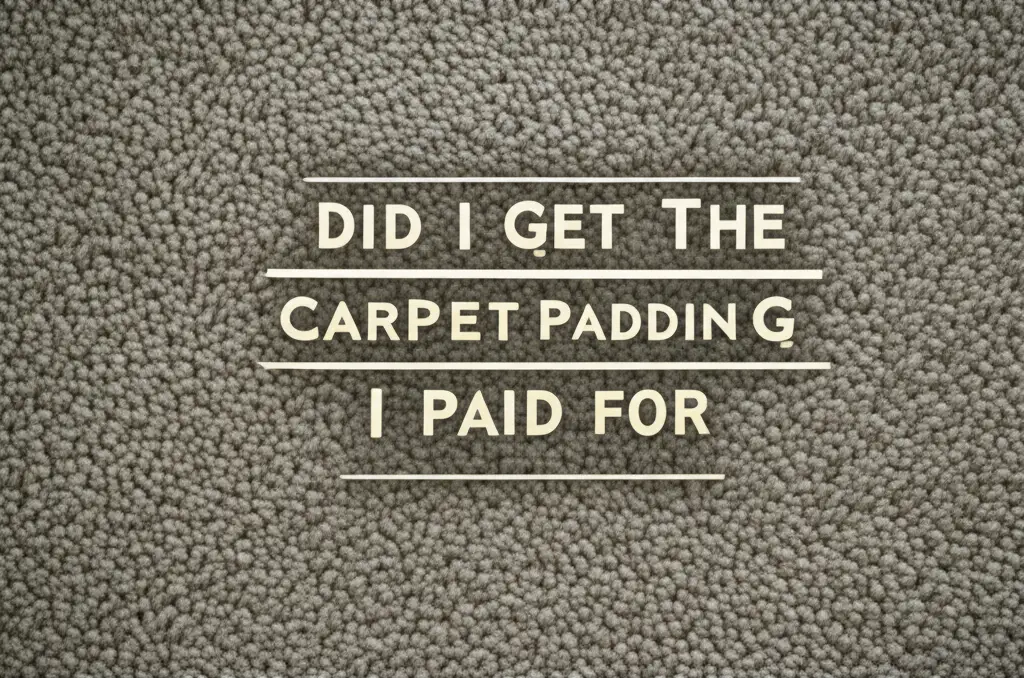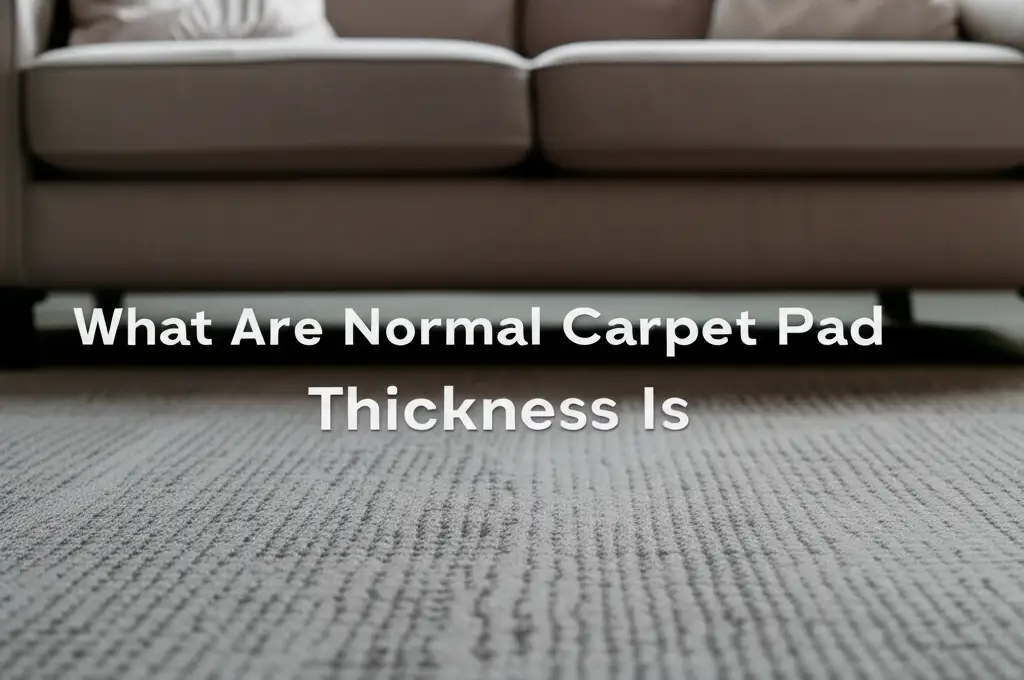· Elira Thomsen · Flooring · 13 min read
What Purpose Of Extra Flooring Under Carpet
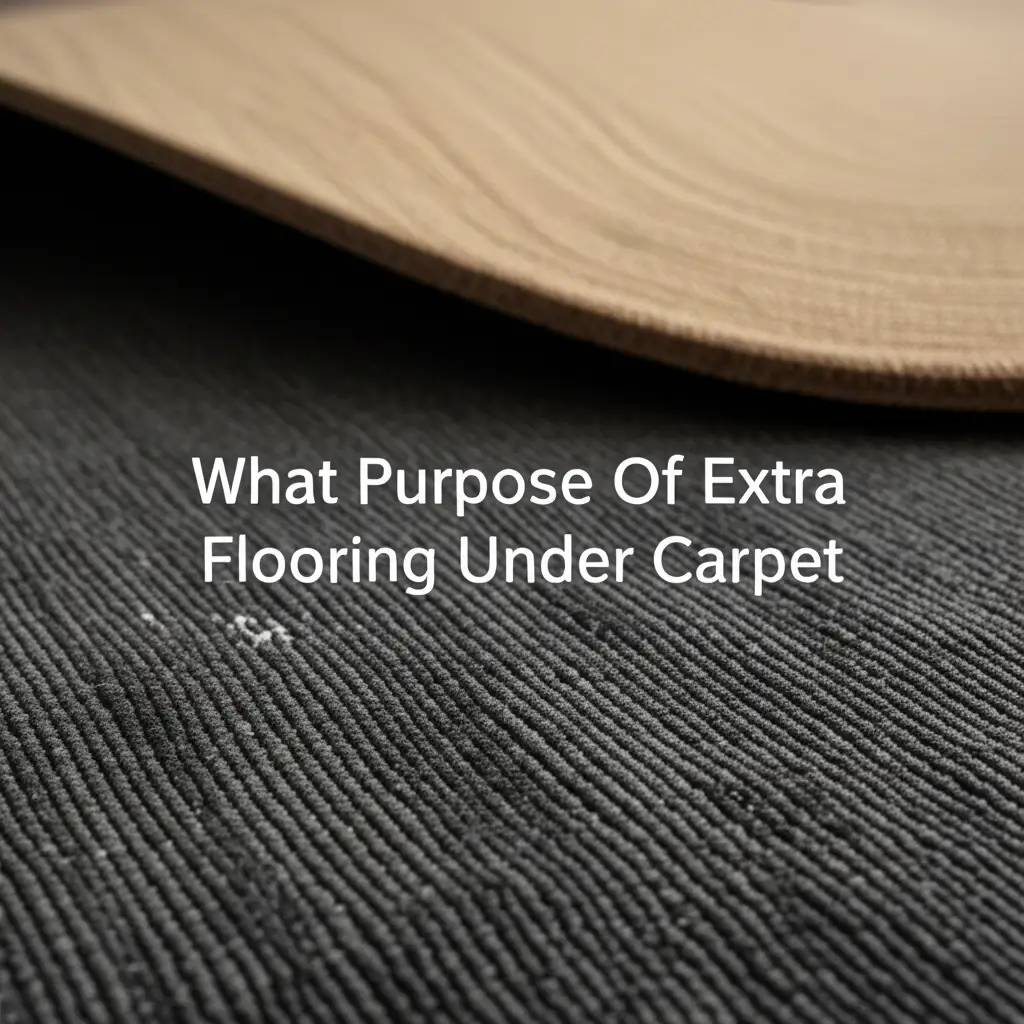
Understanding the Purpose of Extra Flooring Under Carpet
Have you ever considered what lies beneath your soft, inviting carpet? Most people simply enjoy the warmth and comfort it provides. However, a significant part of that comfort and the carpet’s longevity comes from the “extra flooring under carpet.” This foundational layer, often unseen, plays a vital role in your home’s flooring system.
We often think of flooring as just the top surface. Yet, beneath that surface, several layers work together. This article explores the essential roles of the subfloor and underlayment, explaining why they are crucial components of any carpeted room. We will dive into how these layers provide structural support, enhance comfort, offer insulation, and protect your investment for years to come. Understanding these elements helps you make informed decisions for your home.
Takeaway
- Subfloor: Provides structural integrity and a stable base for all flooring types.
- Underlayment (Carpet Padding): Adds comfort, insulation, sound absorption, and extends carpet life.
- Protection: These layers protect against moisture, wear, and tear, preserving your home’s value.
- Enhanced Living: They contribute to a quieter, warmer, and more comfortable indoor environment.
What is the purpose of extra flooring under carpet?
Extra flooring under carpet serves multiple crucial purposes. The subfloor provides the primary structural base, offering stability and support to the entire floor system. Underlayment, or carpet padding, then enhances comfort, provides thermal and acoustic insulation, extends the carpet’s lifespan by reducing wear, and helps smooth out minor subfloor imperfections.
Understanding the Foundation: The Subfloor’s Essential Role
The subfloor is the very first layer of “extra flooring under carpet.” It sits directly on top of your home’s floor joists. Think of it as the bedrock for all your flooring surfaces. Without a solid subfloor, your entire floor system lacks proper support.
This essential layer carries the weight of furniture, people, and everything else in the room. It distributes these loads evenly across the floor joists. Most modern homes use plywood or oriented strand board (OSB) for subfloors. These materials provide a flat, stable platform. A strong subfloor ensures your floors do not sag or creak. It creates a rigid base that is necessary for any type of flooring, not just carpet. Maintaining a sound subfloor is key to a stable home.
A damaged subfloor can cause many problems for your carpet. You might notice soft spots or uneven areas underfoot. These issues can lead to premature wear and tear on your carpet. Professional carpet installers often inspect the subfloor before installation. They fix any problems to ensure a smooth, lasting finish. Addressing subfloor damage promptly saves you from bigger repairs later. Carpet installers often address issues like rotted floors to ensure a proper installation. A solid subfloor is the first step to a beautiful and durable carpet installation.
Beyond the Subfloor: The Purpose of Carpet Underlayment
Once the subfloor is in place, another critical layer of extra flooring comes into play for carpet: the underlayment. This layer is commonly known as carpet padding. It sits directly between the subfloor and the carpet itself. Many people mistakenly believe carpet can go straight onto the subfloor. However, underlayment serves distinct and important functions that the subfloor cannot provide.
The subfloor offers structural stability, but the underlayment offers comfort and performance. It acts as a protective barrier and a comfort enhancer. You will find various types of underlayment, including foam, rubber, or felt. Each type offers different benefits in terms of density and thickness. The right underlayment choice can significantly impact your carpet’s feel and lifespan. This layer is not just an accessory; it is a vital part of a complete carpet system. It makes a big difference in how your carpet looks and performs over time.
This padding provides immediate benefits you can feel. It adds a plush, soft feeling underfoot. This comfort makes walking and standing on carpeted floors much more pleasant. It also helps the carpet itself look better. The underlayment prevents the carpet from flattening too quickly in high-traffic areas. This means your carpet maintains its new appearance for a longer time. Choosing a high-quality underlayment is as important as selecting the carpet itself.
Enhancing Comfort and Cushioning Underfoot
One of the most noticeable benefits of extra flooring under carpet, specifically underlayment, is the enhanced comfort. When you walk across a carpeted floor, the soft, cushioned feeling you experience comes primarily from the padding beneath. This layer acts as a shock absorber. It makes the floor much more forgiving on your feet and joints.
Different types of underlayment offer varying levels of softness and support. For example, a thick foam pad provides a very plush feel. A denser rubber pad offers a firmer, more resilient cushion. The right pad creates a luxurious feel, transforming a basic carpet into a premium surface. This cushioning effect is not just about indulgence; it also reduces fatigue. Spending extended periods on a well-padded carpet is far more comfortable than on a hard surface. This layer improves your daily living experience.
The cushioning also helps reduce the impact of falls. While not a complete safety solution, a padded carpet can soften a stumble. This is especially beneficial in homes with children or elderly residents. The bounce and give provided by the underlayment make the floor feel warm and inviting. It creates a cozy atmosphere in any room. Ultimately, underlayment makes your carpeted floors a true pleasure to walk on.
Acoustic Insulation: Quieting Your Home
Another significant purpose of extra flooring under carpet, particularly the underlayment, is acoustic insulation. Noise can be a big problem in many homes. Foot traffic, voices, and even furniture moving can create unwanted sounds. Carpet alone helps absorb some sound, but the underlayment greatly enhances this effect. It acts as a barrier to sound transmission.
Underlayment reduces both airborne noise and impact sound. Airborne noise includes talking or music. Impact sound comes from footsteps or dropped items. The dense material of the padding absorbs sound waves. This stops them from traveling through the floor to rooms below or adjacent areas. For multi-story homes, apartments, or busy households, this sound dampening is invaluable. It creates a quieter, more peaceful living environment for everyone.
Think about a busy family home. Kids playing, people moving about, all create noise. Underlayment significantly mutes these sounds. It also improves the acoustics within the room itself. Sounds do not echo as much, making conversations clearer and music sound better. Different underlayment materials have varying sound-absorption ratings. Choosing a pad with a high sound transmission class (STC) rating can make a noticeable difference. This quiet benefit contributes greatly to overall home comfort.
Thermal Insulation: Regulating Room Temperature
Beyond comfort and quiet, extra flooring under carpet provides valuable thermal insulation. The underlayment acts as a barrier against temperature changes. This helps to regulate the temperature inside your rooms. Floors, especially those over unheated basements or crawl spaces, can be a major source of heat loss in winter. They can also contribute to heat gain in summer.
Underlayment slows down this heat transfer. It traps air within its structure. This trapped air resists the flow of heat, keeping your rooms warmer in cold months. During warmer weather, it helps prevent heat from rising through the floor into your living space. This makes your home more comfortable year-round. It means your heating and air conditioning systems do not have to work as hard.
This thermal benefit translates directly into energy savings. Lower energy consumption helps reduce your utility bills. Some underlayments even come with specific R-values, which measure their insulating capability. A higher R-value means better insulation. Investing in good quality underlayment is a smart choice for both comfort and your wallet. It makes your home feel cozier and more energy efficient.
Protecting Your Investment: Carpet Longevity and Durability
The purpose of extra flooring under carpet extends significantly to protecting your carpet itself. Underlayment plays a crucial role in extending the life and maintaining the appearance of your carpet. Carpet is a significant investment. You want it to last as long as possible. The padding underneath helps achieve this by absorbing impact and reducing direct wear on the carpet fibers.
Without proper underlayment, carpet fibers get crushed quickly. This happens because there is no cushion to absorb the force of footsteps. The carpet backing also rubs directly against the subfloor, leading to faster deterioration. Underlayment provides a soft landing zone. It helps the carpet bounce back after being stepped on. This prevents matting and extends the carpet’s plush look. It also helps prevent the carpet from stretching or buckling. Proper installation with good underlayment ensures the carpet lays flat and smooth for years.
Consider areas like doorways or staircases. These spots see heavy foot traffic. A good underlayment protects the carpet in these vulnerable areas. It helps the carpet maintain its integrity even under constant use. This protection is vital for long-term durability. Proper installation techniques can help fix carpet issues even in high-traffic areas like doorways. Investing in quality underlayment is an investment in your carpet’s future. It makes your carpet look better and last longer.
Moisture and Vapor Barriers: Safeguarding Against Damage
A vital purpose of extra flooring under carpet involves protecting against moisture. Moisture is a silent enemy of flooring. It can lead to mold, mildew, and damage to both the subfloor and the carpet itself. Many underlayments include an integrated moisture or vapor barrier. This feature creates a protective layer. It prevents moisture from rising up from the subfloor into the carpet.
This protection is especially important in certain areas of your home. Basements, concrete slab foundations, or homes in humid climates are prime examples. Concrete subfloors can emit moisture vapor, even if they appear dry. Without a barrier, this moisture can get trapped under the carpet. This creates a breeding ground for mold and mildew. Mold not only damages the carpet but can also cause unpleasant odors and health issues.
A good moisture barrier keeps your carpet dry and clean. Some underlayments feature a plastic film or a specialized coating. This design stops vapor from passing through. While the concept might seem specific to cars when talking about drying matting under a carpet, the principle of protecting against dampness is universal. Ensuring proper moisture control beneath your carpet is essential. It extends the life of your carpet and maintains a healthy indoor environment. This layer is a crucial safeguard for your flooring investment.
Leveling and Preparing the Surface for Installation
The final significant purpose of extra flooring under carpet is to help level and prepare the surface for a flawless installation. Even a well-constructed subfloor may have minor imperfections. Small dips, bumps, or inconsistencies can exist. If you install carpet directly on such a surface, these flaws will show through. The carpet will look uneven, bubbly, or wrinkled. This ruins the aesthetic appeal and affects the carpet’s longevity.
Underlayment helps to bridge these minor gaps and depressions. It creates a smooth, uniform surface for the carpet to lay upon. This is not about correcting major subfloor problems. Instead, it handles slight irregularities. The padding ensures that the carpet adheres properly and lies perfectly flat. This results in a professional-looking finish. It prevents issues like ripples and buckles that can occur over time.
A properly leveled surface also makes installation easier. The carpet can be stretched evenly and precisely. This reduces the chances of premature wear in specific spots. It also ensures that the carpet edges and seams blend seamlessly. This attention to detail guarantees a beautiful and durable result. Ultimately, underlayment provides the ideal foundation. It ensures your carpet looks its best and performs well for many years.
FAQ Section
Q1: Is carpet padding always necessary?
Yes, carpet padding is almost always necessary for residential carpets. It is crucial for comfort, insulation, and extending the carpet’s lifespan. Installing carpet without padding voids most manufacturer warranties. The only exceptions are specific commercial carpets designed for direct glue-down installation. Padding adds softness and support.
Q2: Can I install carpet directly on a concrete subfloor?
You can install certain types of carpet directly on a concrete subfloor, but it’s not ideal for most residential carpets. You still need a moisture barrier to prevent dampness from seeping into the carpet. For maximum comfort and durability, installing a proper underlayment or specialized padding designed for concrete is highly recommended. It protects your carpet.
Q3: What’s the difference between subfloor and underlayment?
A subfloor is the structural base of the floor, typically plywood or OSB, fastened to joists, providing support for the entire room. Underlayment, or carpet padding, is a thinner layer placed directly on top of the subfloor and beneath the carpet. It adds comfort, insulation, sound dampening, and extends carpet life. They serve different but complementary roles.
Q4: How does subfloor affect carpet installation cost?
The subfloor significantly affects carpet installation cost if it requires repair or replacement. Installers might charge extra to fix squeaks, unevenness, or damaged sections before laying carpet. A sound, level subfloor reduces preparation time and labor costs. Addressing subfloor issues beforehand saves money and ensures a better result.
Q5: How thick should carpet padding be?
The ideal carpet padding thickness usually ranges from 7/16 inch to 1/2 inch for most residential applications. Thicker padding often provides more comfort and insulation. However, padding that is too thick can make the carpet difficult to stretch properly, leading to ripples. Always check your carpet manufacturer’s recommendation for pad thickness and density.
Q6: Can a bad subfloor cause carpet problems?
Yes, a bad subfloor can cause numerous carpet problems. Unevenness in the subfloor will lead to ripples, bumps, or uneven wear spots in the carpet. Moisture issues in the subfloor can cause mold and mildew to grow under the carpet. A weak or damaged subfloor can also lead to squeaks and an unstable feeling underfoot, reducing the carpet’s longevity and appearance.
Conclusion
The “extra flooring under carpet” might be unseen, but its importance cannot be overstated. From the robust subfloor providing foundational stability to the versatile underlayment delivering comfort, insulation, and protection, each layer serves a distinct and vital purpose. These hidden components are the unsung heroes of your home’s flooring system. They ensure your carpet not only looks good but also performs well for many years.
Understanding the purpose of extra flooring under carpet helps us appreciate the engineering behind comfortable and durable floors. These layers contribute to a quieter, warmer, and more energy-efficient home. They protect your significant investment in carpet, extending its life and maintaining its plush appearance. When planning your next flooring project, remember the critical role of these foundational layers. For professional advice or to address specific flooring needs, consider reaching out to a trusted flooring specialist. They can help you choose the best solutions for your home.
- extra flooring under carpet
- subfloor benefits
- carpet underlayment
- floor structure
- home flooring guide
- sound insulation
- thermal insulation
- moisture barrier
- carpet longevity


